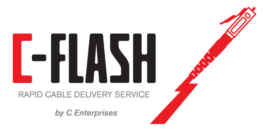If you’re a building owner, builder, or project manager, you know that most jurisdictions require International Fire Code (IFC) or National Fire Protection Association (NFPA) compliance before you can obtain an occupancy permit. Find out the difference between the two sets of requirements and what you need to install a public safety distributed antenna system (DAS) that meets standards.
How to Meet NFPA and IFC Public Safety Building Code
[fa icon="calendar'] October 30, 2017 / by C Enterprises posted in NFPA
The Importance of Public Safety DAS
[fa icon="calendar'] October 23, 2017 / by C Enterprises
Distributed antenna systems (DAS) allow providers to extend wireless coverage in large buildings or oversized structures like sports arenas. They do the work of one powerful device using a network of connected smaller antennas to improve signal and are especially important to first responders in emergency situations. When there’s a fire, earthquake, or violent attack, it’s critical police, fire, and medical personnel have uninterrupted communication both inside and out.
What is DAS?
[fa icon="calendar'] October 11, 2017 / by C Enterprises
DAS stands for Distributed Antenna Systems. With large buildings, there are often dead spots that interfere with wireless coverage. Radios and cell phones have a weak signal or don’t work at all. A network of small antennas act as repeaters to distribute signals into areas of poor coverage. If you’ve ever wondered what DAS is, read on to find out more.
The Latest in Digital Lighting Management
[fa icon="calendar'] October 4, 2017 / by C Enterprises posted in Digital Lighting
Digital lighting management (DLM) is like having an energy savings specialist in every room. Since for most buildings lighting makes up 20 percent of their overall energy expense, and 38 percent of their electricity costs, technology solutions for improving efficiency in that area are an excellent investment. Digital lighting management connects every light fixture in a room, floor, or building to a network. The system monitors and adjusts each light depending on factors like time, occupancy, and available daylight.
What are the Benefits of Digital Lighting Management?
[fa icon="calendar'] September 27, 2017 / by C Enterprises posted in Digital Lighting
Over the last few years, lighting controls have become increasingly complex. Instead of lights just being controlled at the switch, manufacturers have improved energy efficiency by adding photocells and occupancy sensors so lights go off when not in use. These lights could be connected into a network to generate savings, but they had no software to capture data. Savings weren’t measurable. Digital Lighting Management (DLM) takes lighting efficiency to the next level.
Inside San Diego’s Petco Park Distributed Antenna System (DAS) Network
[fa icon="calendar'] September 18, 2017 / by C Enterprises posted in DAS Network
When thousands of sports fans gather in the same place at the same time, they all take their technology. Event attendees want to stream live broadcasts, post photos and video to social media, and keep in touch with friends and family members at home. When interviewed by sports facility staff, fans said Wi-Fi access was a major part of their ability to enjoy an event. The Petco Park DAS shows how one facility solved this problem.
What are the “Building Energy Efficiency Program” (Title 24) Standards?
[fa icon="calendar'] September 11, 2017 / by C Enterprises posted in Title 24
Part six of the California Energy Code is known as the Title 24 Standards. It’s also called The Energy Efficiency Standards for Residential and Nonresidential Buildings. The California Building Standards Commission created them in 1977 to reduce the amount of energy California consumes. There have been numerous updates to the code, each time to refine requirements. Standards focus on both new and existing buildings, and aim to reduce energy consumption indoors and outdoors.
The Effect of 2016 “Building Energy Efficiency Program” (Title 24) Electrical Requirements
[fa icon="calendar'] September 7, 2017 / by C Enterprises
California’s Energy Commission standards have focused on reducing electricity usage since 1977. The Commission predicts residential and commercial energy consumption and measures savings over time. Title 24 Standards for 2016 focus on energy efficiency in new construction by regulating standards for attics, walls, water heaters, and light fixtures. Implementation is estimated to save enough electricity to power 500,000 California homes. Here’s how 2016 standards changed what builders can use in new construction, including Title 24 Electrical requirements.
Have a 40Gig Application? Here’s the Cabling Infrastructure You Need
[fa icon="calendar'] August 14, 2017 / by C Enterprises posted in Cabling Infrastructure
If you manage a 40 Gigabit (40G) data center or application, you need a cabling infrastructure to match. While 1G and 10G networks can use small form factor pluggable (SFP), 40G networks are quad small form-factor pluggable (QSFP). They require their own infrastructure to maintain seamless connectivity. Learn about these requirements and how you can ensure your 40G data center’s consistent functionality.
How to Optimize Your Data Center’s Storage Space
[fa icon="calendar'] August 7, 2017 / by C Enterprises posted in Data Center
You spend thousands of dollars on your data center every year. This is just for the space, not all of the equipment it houses. Data center real estate is incredibly costly, but it’s a necessary expense for almost every enterprise. To maximize your cost investment, you need to optimize how you use your limited space. Many managers make the mistake of implementing thick, unwieldy Category (CAT) 6A cabling when they have a slimmer alternative available. Find out of CAT6 is the answer you need for space saving in your data center.
















